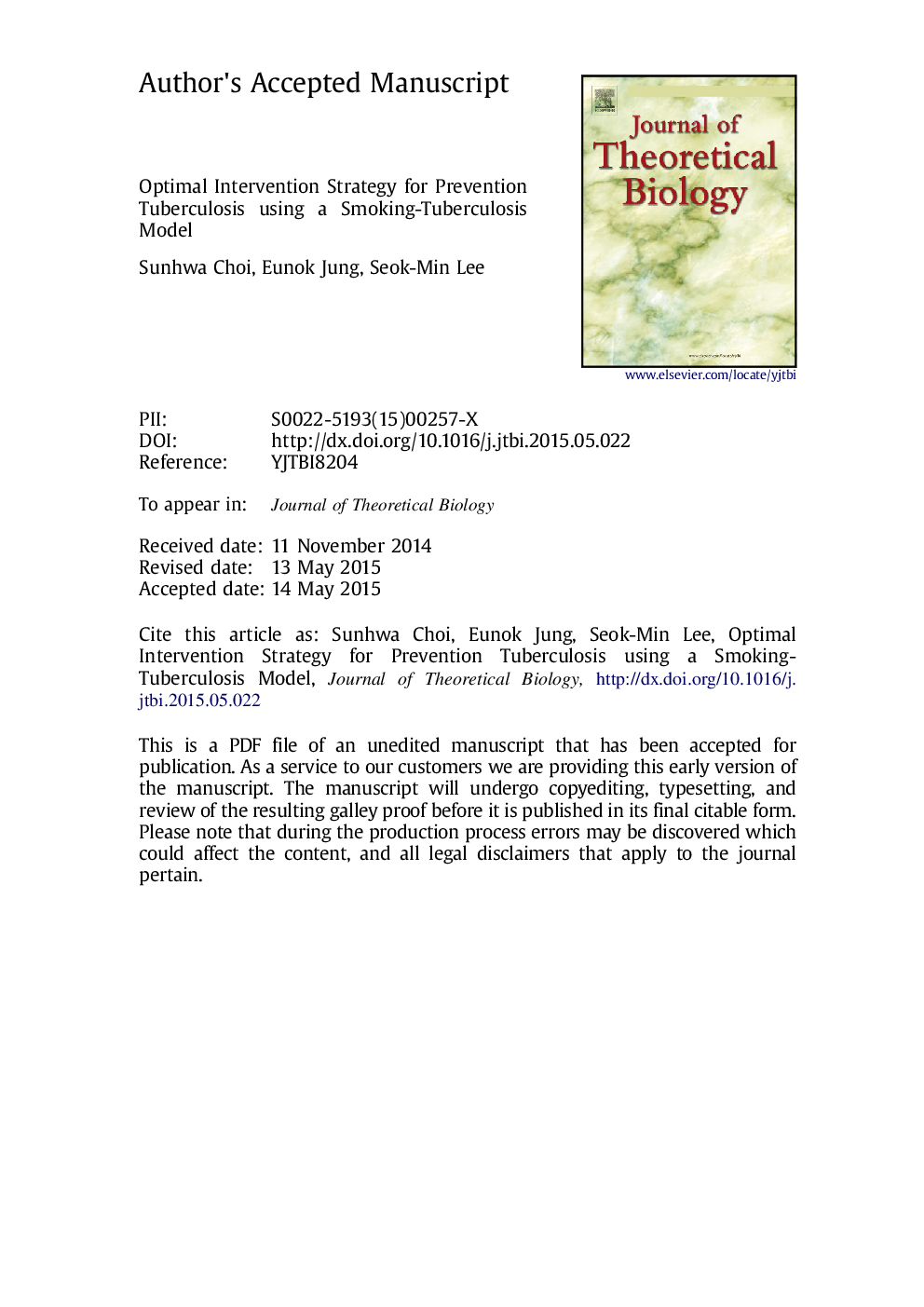| Article ID | Journal | Published Year | Pages | File Type |
|---|---|---|---|---|
| 6369630 | Journal of Theoretical Biology | 2015 | 33 Pages |
Abstract
In this paper, we developed a dynamic model of smoking-tuberculosis (TB) transmission in South Korea, and investigated the effects of control strategies on the number of incidence of TB using optimal control theory. Model parameters regarding TB and smoking are estimated through least-squares fitting to real data. We considered three TB controls (distancing, case-finding, and case-holding) and two smoking controls (distancing and quitting), in order to minimize the number of exposed and infectious individuals and the cost of control. Numerical simulations for the various control strategies highlight that implementing the smoking controls, not with TB controls, can effectively reduce the incidence of TB transmission.
Related Topics
Life Sciences
Agricultural and Biological Sciences
Agricultural and Biological Sciences (General)
Authors
Sunhwa Choi, Eunok Jung, Seok-Min Lee,
